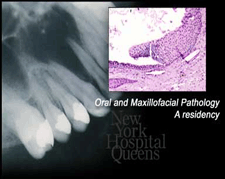المقالات
Torus Mandibularis

A torus mandibularis is a slow-growing, tumor-like bony growth that develops on the inside (lingual) surface of the lower jaw bone (the mandible). Tori are smooth, and can be either broad and flat or knob-shaped. They vary considerably in size, from a few millimeters to several centimeters in diameter. They may be singular nodules or multiple nodules that fuse together, extending two to four centimeters along the inner surface of the lower jaw. Normally, tori are bilateral, which means they occur on both the left and right sides of the mouth. Their growth pattern is so gradual that many patients assume they are normal and that everyone has them.
Typically they are little more than an annoyance, causing no pain and requiring no treatment unless they interfere with the placement of a denture. When the torus is large, it is subject to irritation and ulceration from repeated trauma. Once injured, the ulceration can be slow to heal because of the limited number of blood vessels on their thin tissue surface.
The tendency to develop these growths appears to be hereditary. They occur most frequently in females, Native Americans and Eskimos.
* To guard against the infection that can result from persistent ulceration on the skin that covers the growth.
